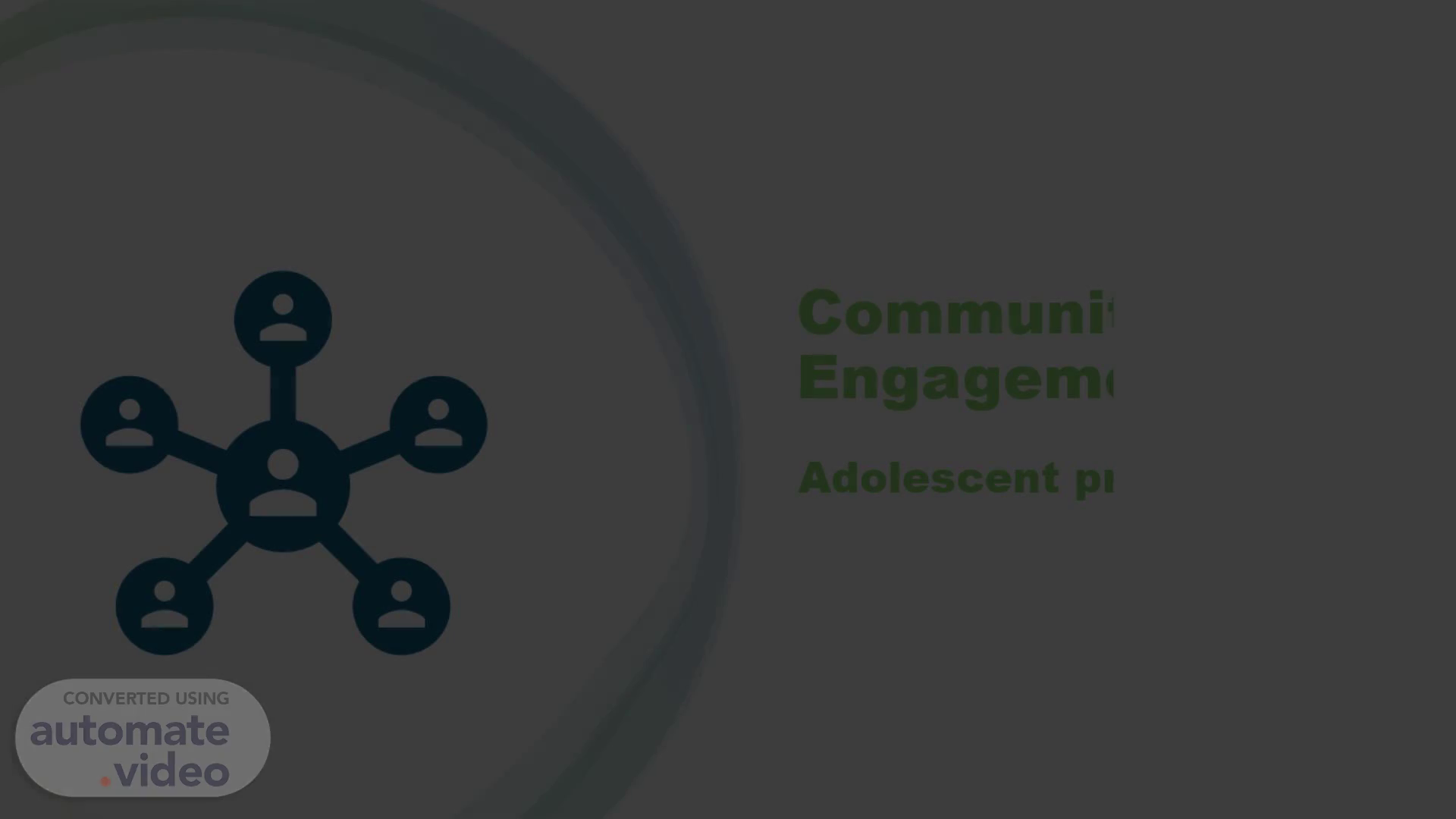Scene 1 (0s)
Community Engagement:. Adolescent pregnancy. [image] Social Network.
Scene 2 (9s)
[Audio] Approximately 21 million teenage pregnancies occur amongst girls aged between 10 and 19 years each year in low and middle-income countries (LMICs). Teenage pregnancies increase the risk of young girls dying during childbirth and have many complications that can affect the baby. Teenage pregnancies also have mental, physical, and social challenges that compromise the life of young girls. Despite government programmes, high rates of pregnancies amongst young girls persist in South Africa. In October 2023, data shows that the Free State had a 13,3% rate of pregnancies involving children between the ages of ten and 14 years. As a health care professional in the field of obstetrics and gynaecology I was deeply concerned about this trend and penned an article on teenage pregnancies, which was published in the Frontiers and later profiled by Al Jazeera News Network. In this context I present a community engagement initiative targeted at the Heidedal community and the grasslands Secondary school..
Scene 3 (1m 15s)
[Audio] Drawing from the discussions and lessons learned on the role of partnerships in community engagement initiatives, I recognised the need to include partners for maximal output and enhance funding to bolster the event. I was fortunate to gain assistance from multiple partners from the academic sphere, N-G-Os and business entities..
Scene 4 (1m 35s)
[Audio] The next step would be to build capacity through teaching and learning of healthcare providers. I became involved in training initiatives such as the Essential Steps in the Management of Obstetrics and Gynaecology, which covers problems experienced by young girls such as life-threatening hypertension and bleeding, which contribute to their deaths in pregnancy. In addition, I sought the resources used in the school sexual education programme from the department of social welfare and read through them to assist in strategizing on the initiative. In addition, I collaborated with the Informatics department at the university to create a video, appreciating that child are more attuned to audiovisual aids than books currently. The video was an instant success to the extent that requests were made by the department of health and social welfare to use it in ongoing programmes within the province..
Scene 5 (2m 28s)
[Audio] The big day arrived on the 4 August 2024 , when we set out to the Heidedal Community targeting the Grasslands Secondary School. The community looked quiet with little movement, and I became anxious about whether the initiative would turn out to be a success. To add to my anxiety, on entering the school, the school hall was empty, however I remained hopeful.
Scene 6 (2m 51s)
[Audio] As the minutes passed on , small groups of students and parents started to gather outside and there was a trickling of students into the hall. My anxiety turned into hope and over the next 45 minutes, the initiative turned into a bustling event with a packed hall, as we scrambled for extra chairs. Refreshments were also provided which added to the enthusiasm and vibe.
Scene 7 (3m 15s)
[Audio] The community education component was diversified into group discussion with experts , round table discussions with students , a parents round table discussion and self-reflection by the students..
Scene 8 (3m 32s)
[Audio] The initiative was successful as many thoughts , ideas, debates and discussions culminated in joyous dancing , with the students armed with knowledge to embrace their sexuality and avoid unplanned pregnancies.
Scene 9 (3m 47s)
[Audio] The initiatives saw the birth of new partners and rekindled relationships with partners which included Free State Department of Health, Free State Department of Social Development , U-F-S Department of Obstetrucs and Gynaecology, N-G-Os such as Love Life and Soul City and business such as Organon , Bayer and others.
Scene 10 (4m 11s)
[Audio] The initiative achieved the following outputs : The initiative was able to established long term partners, promote abstinence and contraception and enhance education about teenage pregnancy. An assessment in October 2024 will allow us to reflect on our successes and develop ways to improve and innovate further. The prevention of teenage pregnancies is everyone's responsibility..
